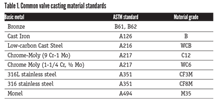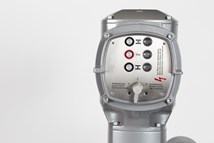Valves for Thermal Energy Storage Systems
Durability, reliability and proper sizing are just a few considerations when selecting valves for building systems.
Thermal energy storage (TES) systems are growing in demand due to their ability to provide cost savings, expanded cooling capacity, resiliency and sustainability for commercial and industrial facilities. In a nutshell, TES systems store thermal energy (chilled water or hot water) for later use, which can be beneficial in managing energy supply and demand by storing excess energy produced during periods of low demand for use during peak times.
Applications for TES systems
TES systems are used in centralized campuses, large hospitals and military installations to meet increased cooling loads without investing in additional chillers, cooling towers and pumps. Another area of increased demand for TES is large data centers, which require cooling systems to manage the significant heat generated by their IT equipment. At the time this article is being written, there are more than 5,300 data centers in the U.S., and the market is projected to grow from $26.67 billion USD in 2023 to $55.83 billion USD by 2028, with a compound annual growth rate of nearly 16%.

Thermal valves installed in a university TES system.
All this demand for TES has put pressure on water utilities and private infrastructure to supply these facilities with large amounts of water. Control valves are used in water production, transmission and storage facilities. But proper selection and configuration of valves that control flow and pressure are critical in the design of a TES system, ensuring the valves will manage the system under all types of loads.
Due to the volume and size of these systems, automatic control valves provide many advantages over actuated ball or butterfly valves.
Greater range and precision of modulating control
Globe-style automatic control valves have greater rangeability for flow and pressure applications. Due to their linear design, automatic control valves excel at modulating flow and maintaining tight control, providing infinite positioning capabilities. In contrast, ball and butterfly valves have a more limited control range.
Improved resistance to cavitation
Cavitation can be an issue in some TES systems, causing valve damage, noise and reduced efficiency. Automatic control valves are less susceptible to cavitation and can be supplied or retrofitted with anti-cavitation trim if needed.
Valves in a commercial TES system.
Simpler and more cost-effective maintenance
Automatic control valves have fewer moving parts and are generally less complex than actuated ball or butterfly valves. This makes them cheaper and easier to maintain over the long term, requiring fewer frequent overhauls or repairs.
Versatility to perform multiple functions
Many automatic control valves can be configured to perform additional functions beyond just flow control, such as pressure regulation, metering and more.
Reliable backup functionality
Automatic control valves often incorporate backup hydraulic functionality, ensuring continued operation, including during power or control system failures.
Customization and upgradeability
Automatic control valves can be easily modified in the field to add new features or capabilities, without requiring a full valve replacement.
Durability and reliability
TES systems operate continuously, so the selected valves must be durable enough to withstand extended use without frequent maintenance or replacement. Features such as drip-tight closure and field-retrofittable upgrades can help ensure long-term performance.

TES valves encased in foam.
Source: Cla-Val
Software integration
Consider valves that integrate with advanced sizing software. These software programs can model and compare the control capabilities of different valve types in a specific TES application, helping engineers make informed decisions about the most suitable valve solution.
It is also worth considering software that can create 3D drawings that include all building information and specs for implementation into the design. Many of these tools can be added to traditional CAD and architectural software and offer parametric models that update across the design when changes are made, and can include mechanical, electrical and plumbing on one schematic.
TES systems are energy efficient
TES systems contribute to the decarbonization of energy systems, which is one of the many reasons industries and utilities are embracing this new wave as it is yet another tool for transitioning to more sustainable energy practices. According to Allied Market Research, the global thermal energy storage market size was valued at $20.8 billion USD in 2020 and is projected to reach $51.3 billion USD by 2030, growing at a CAGR of 8.5% from 2021 to 2030.
Mechanical, electrical and plumbing engineers should collaborate with local valve manufacturers to harness the full potential of these TES systems. This partnership can help with selecting appropriate valve types tailored to the system’s specific conditions, include the correct size and configuration to meet flow demands and improve the system’s reliability and efficient performance.

Bill Moore, Eastern Regional Manager at Cla-Val Company. Bill has been with Cla-Val for over 30 years and has an in-depth knowledge of thermal energy storage systems, and works with clients to find the right valve for the right application.
RELATED CONTENT
-
Control Valves for Hydrogen Applications
Proper sizing, material selection and monitoring are as important as ever.
-
Valves in Oxygen Service
In his presentation at VMA’s 2017 Technical Seminar, Kurt Larson, a process control engineer for Air Products, spoke about the inherent danger of the oxygen production business and how it is particularly important for end users and valve manufacturers to work closely together.
-
The Evolution of the All-Encompassing Ball Valve
The compact design, simplicity of use, ease of repair and wide performance capability have helped to make the ball valve a dominant design in modern industrial applications.











 Unloading large gate valve.jpg;maxWidth=214)